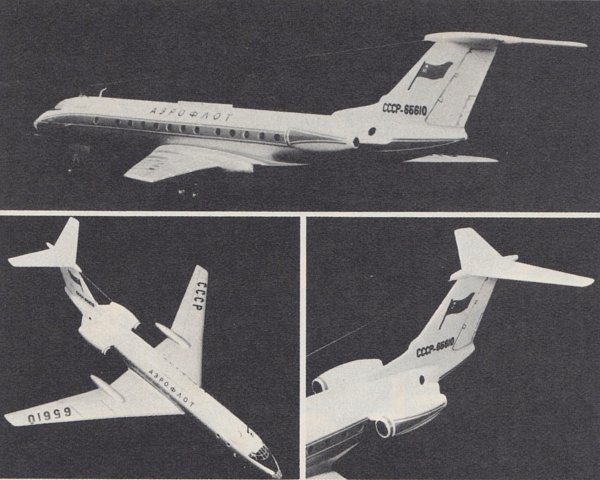| First flown in 1963, the Tupolev Tu-134 (NATO designation “Crusty”) was
an outgrowth of the Tu-124 project.
Originally designated the Tu-124A, although the airframe was essentiall
the same, the Tu-124 designation was
dropped in favor of a new burea
number largely because of the engine
relocation from the wings to the
aft fuselage. |
| |
| Production Tu-134’s, as Russia’s
second rear engined airliner, began internal service with the national airline
Aeroflot in 1966 and started international operation in September 1967 on
the Moscow to Stockholm run. |
| |
| The Tu-134 has a larger wing are.
than the Tu-124 and consequently has
a greater load capacity. The 134 normally carries 64 passengers with a crew
of three. Maximum range of the aircraft is 2,175 miles but it is intended
mainly for stage flights of from 300
to 1,250 miles. Soft field landing gear
gives good small field Performance in and out of second class
airport and those with grass runways
when necessary. |
|
|
| Our model from the East German
firm Modellbaukasten is in 1/100th
scale and depicts a Tu-134 in the service of the Russian national airline
Aeroflot. The instruction sheet for this
kit is written in German, Czechloslovakian, and Russian but it does include a good diagram of the parts
which is numbered for easy reference
to an assembly drawing. |
| |
| Before actual assembly began, all
parts were washed in soap and water
to remove any traces of an oily residue
on the plastic pieces. This is an absolute
necessity for good paint adhesion. |
| |
| Although windows for the passenger
compartments are provided, they were
omitted on this model because the decal
sheet covers the window openings
and acts as an acceptable screen for
each portal. |
| |
| The kit generally goes together well
although some filling and sanding was |
|



![]()